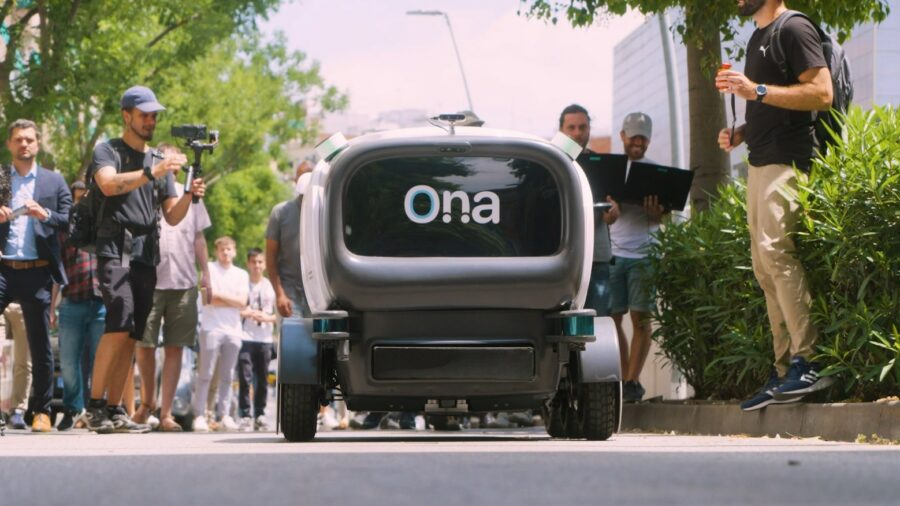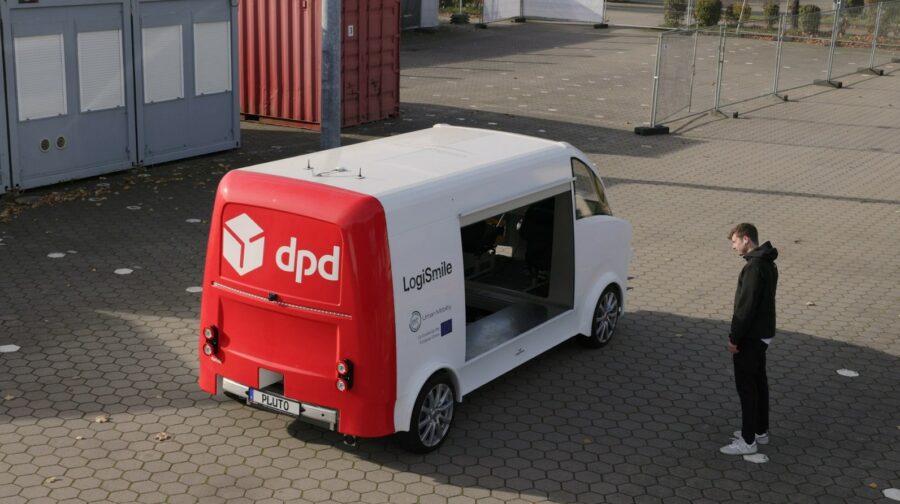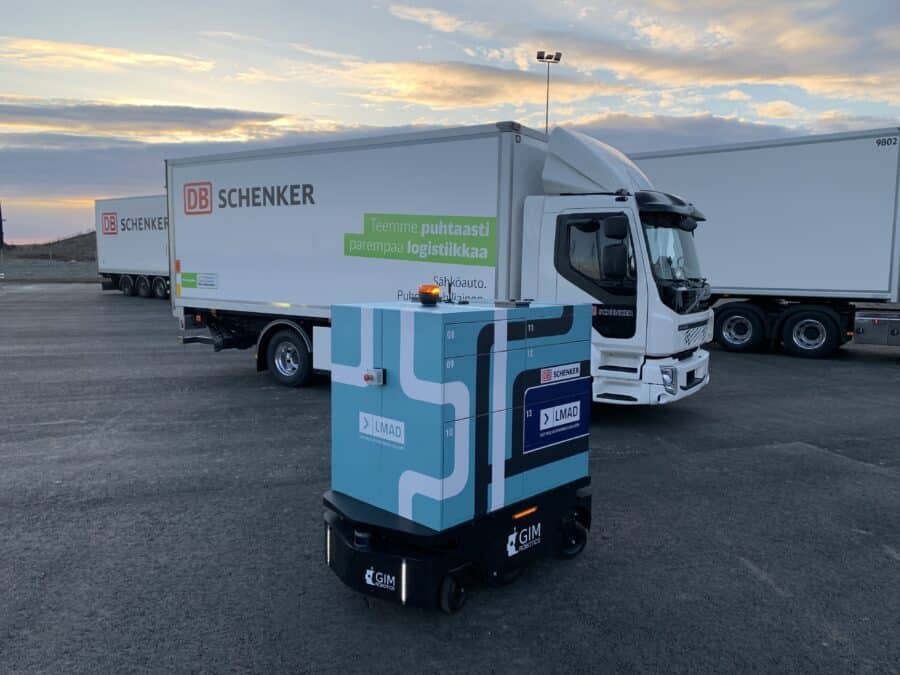How can last-mile autonomous delivery improve customer experiences and satisfaction?
The quality of delivery services is one of the key differentiators for retailers, which is why it’s becoming increasingly important to adapt as well as possible to customers’ demands.
The last mile of delivery (which is LMAD’s main focus) has a key role in all this, since it’s a crucial touchpoint between customers and retailers. And indeed, in a recent survey by Sorted, 63% of respondents said that they would not consider purchasing from a company again if they have a poor delivery experience. According to Ipsos and Octopia, the percentage is even higher: 85%.
On top of that, the last mile of delivery is expensive for retailers, accounting for up to 53% of total delivery costs, which customers are generally not willing to pay: According to another survey, 61% of customers are willing to switch providers to avoid high delivery costs.
As a result, businesses are constantly seeking ways to improve the efficiency of this critical stage in the supply chain. One of the most promising solutions that has emerged in the past few years is last-mile autonomous delivery.
By using self-driving robots, vehicles, or even sometimes drones, autonomous delivery has the potential to revolutionize the way retailers and logistics companies transport goods to customers, improving both the speed and quality of the delivery process.

ONA, an autonomous last-mile delivery robot partners in the LogiSmile project tested in 2022 in Barcelona, Spain
In this blog article, we will explore how last-mile autonomous delivery can enhance the customer experience and satisfaction, as well as the challenges that must be addressed to make this technology a viable option for businesses.
What do customers want from last-mile deliveries?
What do customers want and expect from the last mile of delivery, exactly? Let’s see some of the main pain points – and potential areas of improvement:
- Speed: Customers want their deliveries to be made quickly, if possible within the same day or within a maximum of a few days of placing an order. For food deliveries, demands for speed are even higher, with customers expecting near-instant deliveries and willing to switch to a different retailer if that means they’ll get a faster delivery service.
- Flexibility, choice, and personalization: Customers appreciate personalized experiences and expect delivery services to tailor their offerings to individual preferences. They expect to be able to choose the delivery slot (evening delivery, morning delivery, weekend delivery, or narrow delivery windows), and also to be able to adjust the delivery address if needed (home or office delivery)
- Updates: Receiving timely updates on the status of the delivery is key for customers. They want to receive notifications when the delivery is on its way and when they can expect to receive it.
- Reliability: Customers want their deliveries to be predictable and reliable, with the correct items delivered in good condition. They want to be able to track the delivery in real-time and receive updates if there are any delays or issues.
- Convenience: Another key expectation is for the delivery process to be convenient and hassle-free, with easy online ordering, varied delivery options, and easy returns.
- Sustainability: Customers are increasingly concerned about the environmental impact of delivery services and expect companies to take steps to reduce their carbon footprint.
- Cost: In combination with all of the above, however, many customers remain price-conscious and aren’t necessarily willing to pay a premium for fast deliveries.
Customers’ expectations are indeed one of the most important factors that are shaping the future of last-mile delivery – and, according to McKinsey, three main consumer delivery models are likely to be the best suited to meet those expectations:
- Autonomous vehicles with parcel lockers
- Drones
- Bike couriers (human)
How can autonomous deliveries help retailers and logistics companies meet customers’ demands?
Autonomous deliveries can help retailers & logistics companies provide a better service to their customers. They have a number of advantages that can help companies meet customers’ demands, because they are:
Faster – and able to operate continuously
Autonomous delivery systems can operate 24/7, allowing retailers and logistics companies to provide faster and more efficient deliveries to customers – including late at night or early in the morning, if that’s what some clients expect (f.e. shift workers, people traveling often for business or leisure, busy professionals).
This can be particularly important in urban areas where traffic congestion and other factors can slow down traditional delivery methods, but also in remote locations such as rural areas, where delivery options are limited.

PLUTO, an autonomous vehicle we tested last year together with all partners in the LogiSmile project
More cost-efficient
While the last mile is indeed expensive, autonomous delivery systems can help alleviate this problem, because they can be more cost-efficient than traditional delivery methods, especially in the long run.
This might seem counterintuitive at first; after all, autonomous delivery comes with a high initial investment, which could include:
- Purchasing or renting a robot or a robot fleet
- Purchasing or building robot management software, incl. a client-facing portal
- Training employees to manage the robot
- Obtaining the necessary permits for the robot to operate in the designated territory
- Mapping out the robot’s itineraries, and more.
Once the initial investment is made, however, the cost of operating autonomous delivery vehicles can be significantly lower than the cost of hiring and employing human drivers.
In the current economic climate, customers remain very price-sensitive, with only 25% willing to pay premium rates for same-day delivery – while many still expect deliveries to be fast and efficient. That’s an expectation partially shaped by Amazon Prime’s delivery service, against which few, if any, retailers or logistics companies can compete.
For this reason, optimizing the costs of tomorrow’s deliveries is at the top of the priority list of most retailers and logistics service providers, especially in countries where labor costs are high.
Highly accurate and reliable
As we could see, if companies fail to provide a positive delivery experience to their customers, they’ll quickly lose them to their competitors: 85% of the respondents to a joint Ipsos and Octopia survey said that they’d not buy from the same company again if the delivery service is bad.
Or, otherwise said, if your deliveries aren’t reliable, no matter the quality of the product, you’d inevitably lose customers.
Autonomous delivery systems can help solve this: They can be more accurate and reliable than traditional delivery methods, ensuring that packages are delivered exactly on time and to the right location – and that customers receive timely automated notifications about their deliveries.
More flexible
Autonomous delivery can offer increased flexibility of pickup times and locations – and can enable customers to reprogram the delivery quickly and easily by themselves, without the need for human intervention.
Delivery robots can be programmed to deliver packages to customers’ doorsteps or in front of an office building, making deliveries particularly convenient. They can even be used to deliver parcels on large industrial campuses, which is one of the use case scenarios we’ve tested with EDF and Nokia.
Adaptable to different use cases
Autonomous delivery can be used in a number of use cases (both B2B and B2C), such as:
- B2C deliveries on public roads – which we’ll continue testing in Helsinki with DB Schenker this year
- B2B deliveries on public roads
- B2B on-campus deliveries in different facilities
Delivery robots can even assist in the hospitality industry (f.e. with room service) or at medical facilities (for contactless deliveries to minimize the spread of pathogens).
Overall, autonomous deliveries can help companies meet customers’ demands by providing faster, more efficient, and more flexible delivery options, while also reducing costs and improving reliability.

Last-mile delivery robots can help logistics companies and retailers offer a better service to customers
What are the challenges that still lay ahead of large-scale autonomous delivery operations?
Despite the many ways in which last-mile autonomous delivery can help improve the customer experience, there are still several challenges that must be addressed before large-scale operations become a reality.
The speed at which large-scale autonomous delivery operations can become reality depend on many factors, such as:
- Legislative challenges: Although some governments are moving faster than others, there are still regulatory hurdles to overcome in nearly every country in the world. The use of autonomous vehicles and drones for commercial purposes is still a relatively new and rapidly evolving field. Even in the US, legislation is not yet synchronized on a federal level, which makes large-scale operations particularly challenging.
- Technology maturity: To be a viable delivery option, autonomous vehicles and drones must be able to navigate complex and dynamic environments, such as busy city streets or unpredictable weather conditions. While this is a goal we’re definitely moving closer to, there are still obstacles on the way and challenges to be solved.
- Public acceptance: Concerns around safety, job loss, privacy, and data security are some of the factors that could impact public perception and acceptance of autonomous delivery robots and vehicles. To overcome these concerns, companies and policymakers need to be ready to discuss them with the public in a transparent manner and make the development of robust safety and privacy protocols a top priority.
Addressing these challenges will require collaboration between companies, industry leaders, policymakers, technology innovators, and members of the public to ensure that autonomous delivery can be implemented safely, efficiently, and sustainably.
Retailers who provide an excellent delivery services will realize significant benefits
Demand for rapid, frictionless delivery is increasing and expanding beyond groceries and takeaway, which means that retailers must be ready to provide a service that is fast, flexible, and convenient to stand out.
Nowadays, brand loyalty can be fragile if not managed correctly, and stellar delivery services are an important factor in retaining customers.
According to a report by CapGemini, a positive last-mile delivery service can indeed be a key differentiating factor and help retailers realize multiple benefits such as:
- Get positive reviews from customers (58%) and have them share good experiences with friends and family (82%)
- Retain existing customers and attract new ones
- Be in a better position to promote new products and services (73%)
- Increase customer spend and order value (74%).
In short, with the rise of e-commerce and online shopping, last-mile delivery has become a critical aspect of the customer experience, and retailers who can provide fast, reliable, and convenient delivery options are more likely to succeed in today’s competitive market.
This all means that now is the best time to start experimenting with autonomous robots in order to streamline and improve your delivery services.

